The Future of Data Storage: DNA Storage
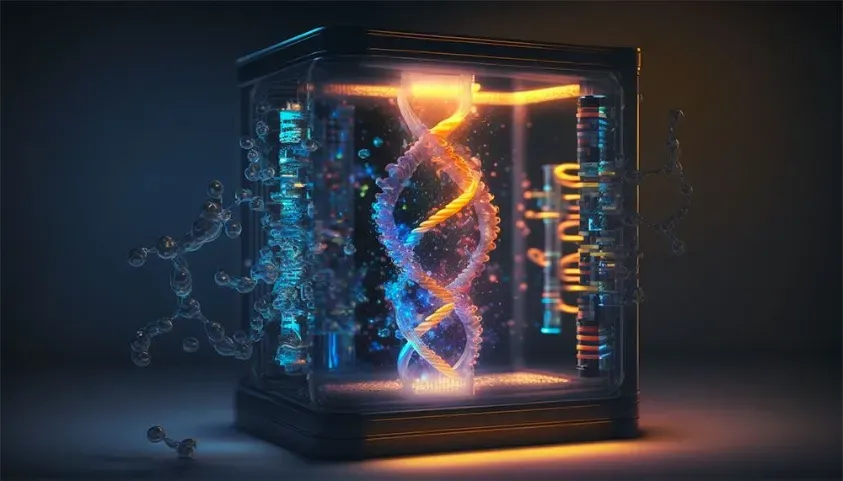
We live in a digital age, where data storage has become a critical aspect of our lives. We generate and consume massive amounts of data daily, from videos, music, and images to scientific data, business records, and personal information. As our reliance on data grows, so does the need for efficient and reliable storage solutions that can keep up with the pace of technological innovation and time itself.
As these storage demands are growing at an unprecedented rate, due to generative AI and the metaverse, among others, traditional storage technologies are reaching their limits. As such, the need for more robust and scalable storage solutions to accommodate this growth is becoming more evident. It is essential to think beyond short-term solutions and consider the long-term implications of data storage, including issues such as data preservation, access, and security, not only for the next five or ten years but also for the next 100 or even 1000 years.
This has led to the development of a cutting-edge technology that promises to revolutionise how we store and access information: DNA storage. With DNA as a storage medium, we can pack an enormous amount of data into an incredibly small space, allowing us to store vast quantities of information in a tiny biological package.
As a futurist, I like to look far ahead, so in this article, I will look closely at DNA storage, exploring its potential advantages, drawbacks, and future applications. So, fasten your seatbelt and get ready to discover the future of storage with DNA.
What is DNA Storage?
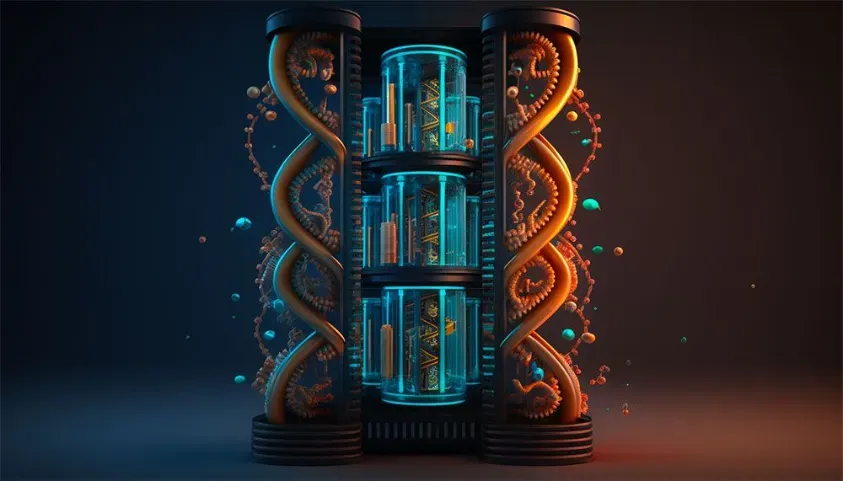
For years, scientists and researchers have been exploring new and innovative ways to store data, from hard drives and flash memory to cloud-based storage solutions. But as data volumes continue to explode, these technologies are reaching their limits in capacity and durability. The amount of data generated and stored worldwide is expected to grow exponentially in the next ten years.
The key driver of this growth is the increasing number of connected devices, such as smartphones, smart homes, and the Internet of Things (IoT) devices, which generate vast amounts of data. According to a report by Statista, the number of connected devices is expected to reach 19.08 billion by 2025.
Also, we need to consider the growth of digital technologies in various industries, such as healthcare, finance, and retail. These industries are expected to generate massive amounts of data from various sources, including social media, transactions, customer interactions, and the 3D immersive internet.
According to the IDC, the amount of data generated worldwide is expected to reach 79.4 zettabytes by 2025. To put this in perspective, one zettabyte equals a trillion gigabytes.
This massive growth in data will create significant opportunities and challenges for organisations and individuals alike. It will require significant investments in data storage, processing, and analytics technologies and skills to turn this data into valuable insights and actions. At the same time, it will require careful consideration of data privacy, security, and ethical issues to ensure that this data is used responsibly and for the benefit of society.
That is where DNA storage comes in. DNA is a remarkable molecule that carries genetic information in every living organism. Its natural ability to store vast amounts of data in a tiny space has captured the attention of scientists and engineers seeking to create a new generation of storage solutions.
We can store a vast amount of information in a relatively small space by encoding data in DNA molecules. For example, one gram of DNA can store up to 455 exabytes of data, which is almost as much as the global data centre storage capacity, which reached around 470 exabytes in 2021. To put this into perspective, that is enough to store all the world's data in a container smaller than a sugar cube.
How does DNA storage work, and the Advantages and Challenges of DNA Storage
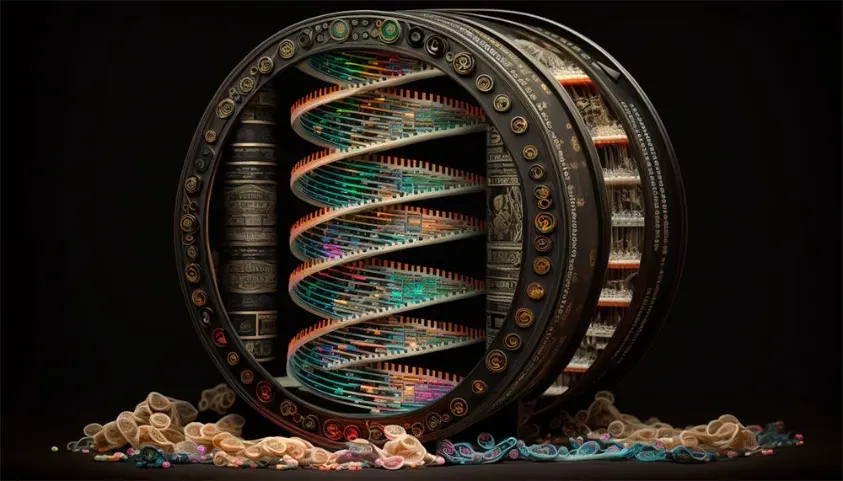
The basic idea behind DNA storage is to convert digital information into the four-letter code of DNA, which consists of adenine (A), cytosine (C), guanine (G), and thymine (T). This code can then be synthesised into actual DNA molecules using advanced lab techniques.
Once the DNA molecules are created, they can be stored in various formats, such as a liquid solution, dried on a surface, or embedded in a synthetic material. To retrieve the information stored in the DNA, scientists can sequence the DNA molecules, which involves reading the sequence of A's, C's, G's, and T's and converting it back into digital data.
The advantages of DNA storage are numerous. For one, it offers an incredibly high storage density, which means we can store massive amounts of data in a relatively small space. In addition, DNA is a stable molecule that can last for thousands of years, making it an ideal solution for the long-term storage of critical information.
However, DNA storage also has some significant drawbacks compared to traditional storage solutions. Firstly, synthesising and sequencing DNA is still relatively slow and expensive, making it impractical for everyday use. Secondly, DNA storage requires specialised laboratory equipment and expertise, which can be a barrier to adoption for many organisations for the time being. Lastly, DNA storage is currently not as easily accessible as traditional storage solutions, as it requires specialised software and hardware to read and write data in DNA format.
Advantages of DNA Storage: Why It is the Future of Data Storage
Although it has some challenges, DNA storage holds immense potential for the future of storage. As research and development continue, we may see DNA storage become a viable option for storing and archiving large amounts of data in the future. From preserving cultural heritage to advancing scientific research, DNA storage could significantly impact how we store and access information.
In this section, we will delve into the advantages of DNA storage and why it is being hailed as the future of data storage. DNA storage offers several advantages over traditional methods, from its potential for massive data storage capacity to its durability and long-term stability. Let's explore these advantages in more detail.
Capacity and Durability
DNA storage offers a higher storage capacity than traditional storage solutions. DNA molecules can store vast amounts of data in a small space, making it ideal for organisations that need to store large amounts of data in a compact form. Besides, DNA molecules are incredibly stable and can resist degradation over time, making them a highly durable solution for long-term data storage.
The high storage capacity and durability of DNA storage could be helpful for organisations that need to archive and preserve critical information, such as scientific data, cultural heritage, or business records. For example, DNA storage could be used to preserve historical documents, photographs, or recordings for future generations, ensuring that they are accessible for centuries to come.
Longevity
DNA storage has the potential to last for thousands of years if stored under the right conditions, making it an ideal solution for long-term data storage. This longevity is due to the stability of DNA molecules, which can resist degradation over time, even in harsh environmental conditions.
The longevity of DNA storage makes it an optimal solution for organisations that need to preserve information for future generations. For example, cultural institutions could use DNA storage to preserve important artifacts, artworks, or historical documents, ensuring that they are accessible for centuries to come.
Energy Efficiency and Sustainability
Traditional storage solutions are not as energy efficient as DNA storage. Once the data is encoded into DNA and synthesised, it can be stored at room temperature without additional energy or cooling. This makes it a highly energy-efficient solution for data storage that could work for organisations that want to reduce their energy consumption and carbon emissions.
DNA molecules are biodegradable and can be broken down naturally without causing harm to the environment. For these reasons, DNA storage requires less energy and produces less waste than traditional storage solutions, making it a more environmentally friendly option.
The environmental sustainability of DNA storage has the potential to help organisations that want to reduce their environmental footprint and adopt more sustainable practices. These include organisations that need DNA storage to store large amounts of data without contributing to carbon emissions or generating electronic waste.
The Challenges of Implementing DNA Storage Technology
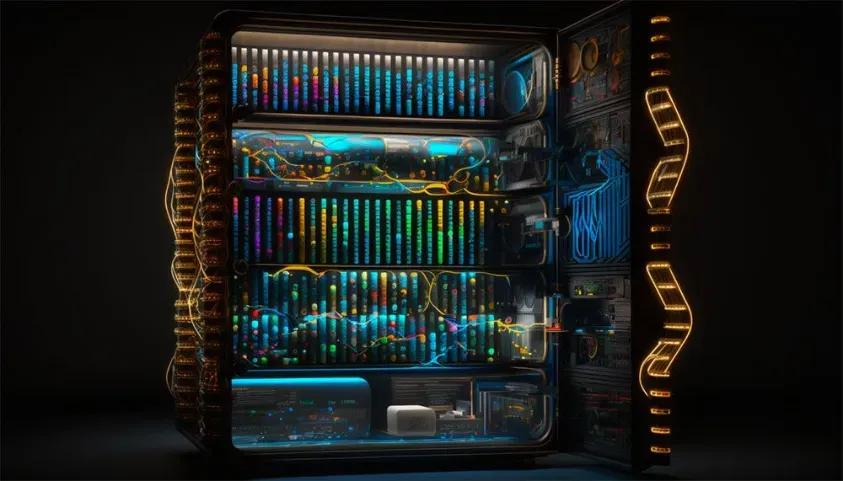
While DNA storage technology holds great promise for the future of data storage, we must overcome several challenges before becoming a widely adopted solution. Here are some of the main challenges of DNA storage:
Cost and Accessibility
Cost and accessibility are two important factors determining any new technology's feasibility. While DNA storage has many advantages over traditional storage methods, its cost and accessibility remain major challenges that must be addressed before becoming a widely adopted solution.
DNA storage is much more expensive than traditional storage methods like hard drives, flash drives, or cloud storage. The cost of synthesising and storing DNA molecules, along with the cost of reading and decoding the data, can be prohibitive for many organisations. For instance, it has been estimated that it would cost approximately $1 trillion to store one petabyte of data (equivalent to one million gigabytes) using DNA synthesis and sequencing technologies, according to a 2021 report from the Massachusetts Institute of Technology (MIT). However, it is important to note that DNA storage costs have decreased over the years. As the technology continues to develop and improve, it is expected to become more cost-effective in the future.
In terms of accessibility, DNA storage is still in the early stages of commercialisation and adoption. While there have been some promising developments and proof-of-concept studies, there are currently no widely available commercial DNA storage solutions. This means the technology is primarily used in research and development settings rather than practical applications.
Despite these challenges, several initiatives and projects are underway to address the cost and accessibility of DNA storage. For example, researchers are exploring ways to improve the efficiency of DNA synthesis and sequencing, which could help reduce the technology's cost. There are also efforts to develop standardised protocols and formats for DNA storage, which could help to increase accessibility and interoperability between different systems and organisations.
Altogether, while the cost and accessibility of DNA storage remain challenges that must be addressed, there is a growing interest and investment in the technology, which is expected to drive further research and development in the field. As the technology continues to evolve, we will likely see more affordable and accessible DNA storage solutions in the future, which could significantly impact how we store and manage data.
Speed of Writing and Reading Data
In today's fast-paced world, speed is everything, but one major challenge is precisely the speed of writing and reading data to and from DNA.
Current methods of writing data to DNA are slow and can take several hours or even days. This is because the process involves synthesising DNA strands and encoding the data onto them one nucleotide at a time. Similarly, the process of reading data from DNA involves sequencing the DNA strands, which is also a time-consuming process.
To overcome this challenge, researchers are exploring new techniques to improve the speed of writing and reading data to and from DNA. One promising approach is to use microfluidic devices to speed up the synthesis and encoding process. Another solution is to use new sequencing technologies that can rapidly read DNA sequences.
As these technologies continue to improve, the speed of writing and reading data to and from DNA will likely increase, making it a more viable option for data storage. Advancements in computing power and data processing capabilities may also help mitigate the challenges of slower data transfer speeds.
Scalability
While DNA storage has shown great potential for storing vast amounts of data, one of the challenges that researchers and scientists face is scalability. The cost and time required for synthesising DNA are still relatively high, so scaling up DNA production for large-scale data storage applications can be challenging.
Among the factors contributing to the scalability challenge is the error rate in DNA synthesis. While advances in DNA synthesis technology have significantly reduced the error rate in recent years, it is still imperfect. As the amount of DNA being synthesised increases, the likelihood of errors also increases. This can lead to data corruption and loss, which can be disastrous for companies and organisations relying on DNA storage for long-term data preservation.
Infrastructure is also needed to support large-scale DNA synthesis and storage. Building and maintaining the necessary infrastructure can be costly and time-consuming. In addition, although storing DNA at room temperature is possible, it is always important ensuring proper temperature and humidity conditions for storing it as it is critical to prevent degradation of the DNA. This requires specialised facilities that may not be widely available or affordable.
Regardless of these challenges, researchers and companies in the DNA storage field continue to work on improving scalability. Advances in DNA synthesis and storage technology, as well as increased investment in infrastructure, may lead to more scalable and cost-effective DNA storage solutions in the future. As more and more data is generated each day, the need for reliable and long-term data storage solutions will only continue to grow, making scalability a crucial factor in the success of DNA storage technology.
Overcoming the Error Rate
As mentioned above, one of the most significant challenges is the issue of error rates. Because DNA sequencing is a complex and error-prone process, there is always the risk of errors when encoding and decoding data from DNA.
Several factors contribute to error rates in DNA storage. The dependability of the DNA synthesis and sequencing procedures is one of the most important factors. While these processes have come a long way in recent years, errors can still occur during the synthesis and sequencing of DNA. In fact, errors can be introduced during the encoding and decoding processes when converting digital data into DNA and vice versa.
To address the issue of error rates in DNA storage, researchers are exploring a variety of techniques, including error correction codes, redundancy, and synthetic biology. By incorporating error-correction codes into DNA sequences, it is possible to detect and correct errors that occur during the sequencing process. Furthermore, redundancy can be introduced into DNA sequences to provide an additional layer of error correction.
While DNA storage has the potential to revolutionise data storage technology, it is important to address the issue of error rates to ensure the reliability and accuracy of stored data. It is exciting to see the progress in this area, and I look forward to the day DNA storage is a reliable and widely used data storage solution.
A Comparison of Emerging Storage Technologies: Quantum Storage and Atomic Storage
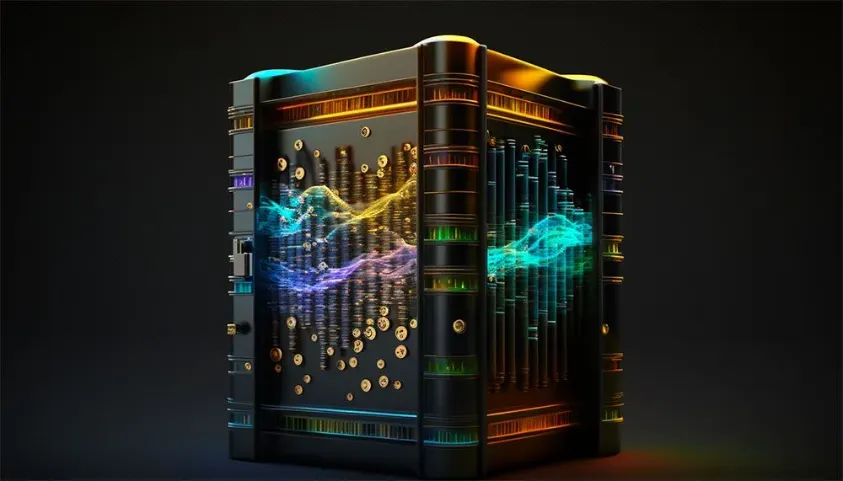
We need to understand the potential of new storage technologies like DNA storage and how they compare to other emerging technologies like quantum and atomic storage.
Quantum storage is a promising technology that utilises the principles of quantum mechanics to store data in quantum states. This technology has the potential to revolutionise data storage by allowing for much larger amounts of data to be stored in much smaller spaces. Quantum storage is typically measured in terms of the number of qubits, the basic unit of quantum information. While quantum computers and quantum storage devices have made significant progress in recent years, the current state-of-the-art quantum storage devices can only store tens of qubits, roughly translating to 500 megabytes of data.
Quantum storage also offers the potential for increased security, as the act of observing a quantum system can change its state, making it very difficult to hack or tamper with. However, DNA storage has a much higher storage capacity, which makes DNA storage a more practical solution for the long-term storage of large amounts of data.
Atomic storage, on the other hand, uses individual atoms as storage units, allowing for data to be stored in much smaller spaces than traditional storage technologies. This technology also offers the potential for increased durability and reliability, as individual atoms are much less likely to degrade or become corrupted over time.
However, like quantum storage, atomic storage is still in the early stages of research and development. Various research groups and institutions are exploring different techniques to manipulate and control individual atoms for data storage, such as scanning tunnelling microscopes (STMs) or spintronics. One of the biggest challenges is controlling the movement of individual atoms and ensuring that they are arranged in a way that allows for efficient data storage. Atomic storage also requires specialised equipment and expertise, making it less accessible than traditional storage technologies.
When compared to these emerging technologies, DNA storage offers several advantages. Unlike quantum and atomic storage, DNA storage is already used in practical applications, such as storing large amounts of data in a very small space. Not to mention, DNA storage is relatively accessible and affordable, with many companies and research institutions already working on developing practical DNA storage solutions.
A Look at the Leading DNA Storage Startups
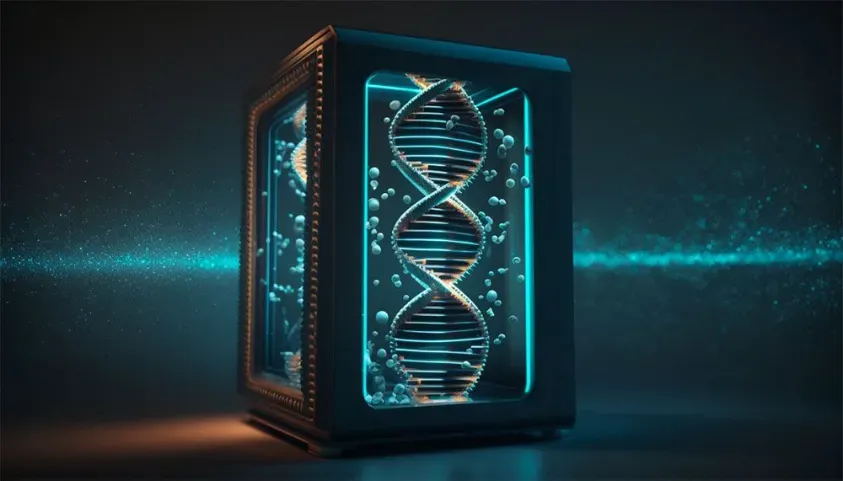
The field of DNA storage is a rapidly growing industry, with numerous startups working to develop and commercialise new storage solutions. These companies are pushing the boundaries of what is possible in terms of data storage, offering a range of innovative and cutting-edge technologies. From novel methods of encoding and decoding DNA to advanced software for managing and analysing genetic data, these startups are at the forefront of an exciting new era in data storage.
We will take a closer look at some of the leading startups in the DNA storage field, examining their unique approaches, technologies, and business strategies.
Catalog DNA
Catalog DNA is an innovative startup that has developed a proprietary DNA synthesis and storage platform, which enables them to offer a commercial DNA storage service to companies and organisations that need to store large amounts of data securely and cost-effectively.
Catalog DNA's platform has the ability to store data in a compact and durable manner. Synthetic DNA has been shown to be an incredibly dense and stable storage medium, capable of storing vast amounts of information for thousands of years. By encoding data onto synthetic DNA strands, Catalog DNA can offer a data storage solution that is both highly efficient and incredibly secure.
Catalog DNA's platform is also highly scalable, which means it can store both small and large amounts of data. This makes it an ideal solution for companies and organisations looking to store large amounts of data, such as research institutions, healthcare providers, and financial services firms.
Twist Bioscience
Twist Bioscience is a company that provides synthetic DNA products and services for various applications, including DNA data storage. They made headlines after partnering with Microsoft to develop a DNA data storage system that can store up to 1 exabyte of data in a single gram of DNA.
Twist Bioscience's technology offers solutions to efficiently encode digital data into synthetic DNA. This is done using DNA synthesis, which involves building DNA strands in a lab from scratch. Twist Bioscience's high-throughput DNA synthesis platform allows them to quickly and cost-effectively produce large quantities of synthetic DNA quickly and cost-effectively, essential for large-scale DNA storage applications.
In addition to its partnership with Microsoft, Twist Bioscience has also collaborated with several other companies and research institutions to develop and test DNA data storage solutions. This includes partnerships with the University of Washington, and the European Bioinformatics Institute, among others.
GenScript Biotech Corporation
GenScript Biotech Corporation is a Chinese biotech company that provides various services and products, including gene synthesis and DNA storage. They have developed a DNA data storage service that uses their own DNA synthesis technology to encode data onto DNA strands.
GenScript Biotech encodes data onto DNA strands at a high density. This is possible due to their proprietary DNA synthesis technology, which allows them to create synthetic DNA strands that are highly accurate and efficient at storing data. By encoding data onto synthetic DNA strands, GenScript Biotech can offer a data storage solution that is both highly efficient and secure.
In addition to its DNA storage service, GenScript Biotech also offers a variety of other biotech services, including gene synthesis, protein expression, and antibody development. This allows them to leverage their biotech expertise to offer their clients a comprehensive suite of services.
Relevance of DNA Storage for Organisations
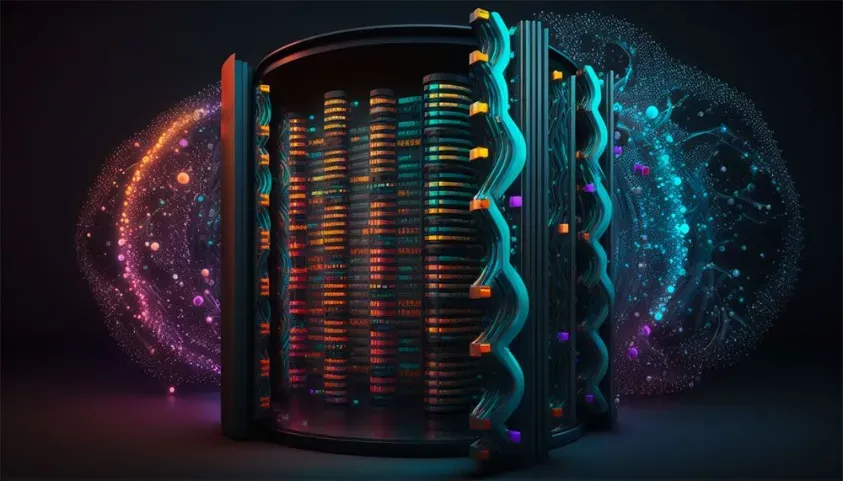
Considering all the advantages and potential applications of DNA storage, it is fair to say that this technology can revolutionise the way we store and manage data, especially for organisations that need to store large amounts of data. Moreover, DNA storage could be a game-changer for companies and organisations that need to store data for extended periods, such as archives or libraries.
The most promising application of DNA storage is in the field of long-term archival storage. Contrary to traditional storage media, such as hard drives and tapes, DNA can potentially preserve data for centuries or even millennia. Thanks to its remarkable stability and resistance to environmental factors that can cause degradation, which makes it a more permanent and sustainable solution for long-term data preservation, ensuring that valuable information is preserved for future generations.
Finance
DNA storage provides a highly secure and reliable way to store financial data. It can store data related to banking transactions, investments, and other sensitive financial information. DNA storage can also be used to store important documents, like contracts and legal agreements. In other areas, such as government, DNA storage can be used to store historical data, like census data and other demographic information. It can also be used to store sensitive data related to national security, like intelligence reports and military records.
Backups
DNA storage also has potential applications in the field of data backup and disaster recovery. Because DNA can store large amounts of data in a very small space, it is a highly efficient solution for backing up critical data in case of a disaster. The reason is that DNA is such a stable molecule it can provide a highly reliable backup solution. This means the data can be safely recovered even if a catastrophic event like a natural disaster or cyberattack happens.
DNA storage may be a possible solution to protect important data from malware and ransomware attacks. Since the data is stored in DNA, it is not susceptible to the same types of attacks as traditional computer storage media. As the threat of malware and ransomware attacks continues to grow, it is possible that DNA storage could become an increasingly important tool in the fight against cybercrime.
This is mainly possible because DNA is an incredibly solid molecule that can withstand a wide range of environmental conditions, including extreme temperatures, moisture, and radiation. This makes it a potential revolutionary backup solution, as it can ensure that the data is preserved in a usable form even in the event of a catastrophic event, ensuring that any company or organisation will always have access to its most relevant data for years or generations to come.
Synthetic Biology
Then, DNA storage has potential applications in the field of synthetic biology. DNA is the fundamental building block of all living organisms. By encoding data into DNA, it is possible to create new types of synthetic life forms that can be used for various applications, including drug discovery and environmental monitoring. The possibilities for this technology are endless, and scientists are only just beginning to scratch the surface of what is possible with DNA storage.
In addition, DNA is a highly secure medium for data storage because it is extremely difficult to access and manipulate without specialised equipment and knowledge. DNA can also be encrypted and protected with password-protected access controls to ensure that only authorised users can access the data. This feature makes DNA storage a desirable alternative for companies and organisations that require a secure and confidential means of storing their data.
While the technology for DNA storage is still in its early stages, some startups and established companies are already developing commercial DNA storage services. As the technology continues to evolve and become more cost-effective, more companies will likely adopt DNA storage as a viable option for long-term data storage.
DNA storage will eventually become most relevant for large organisations as they struggle to manage the ever-growing amount of data they generate. Its potential for high-density storage, durability, security and long-term stability make it an attractive option for companies and organisations that need to store and/or back up large amounts of data. As the technology continues to mature and become more cost-effective, DNA storage will likely become an even more popular option for long-term data storage in the future.
In terms of real-world applications, currently, there are not many companies that have purchased DNA storage technology for everyday use in their organisations, as the technology is still in the early stages of development and commercialisation. However, a few startups and research institutions are actively working to make DNA storage a practical reality. For instance, researchers at the University of Washington, along with Microsoft, have successfully stored digital images and text in DNA, demonstrating the potential of this technology for real-world applications.
Final Thoughts
DNA storage represents a significant advancement in data storage technology, potentially revolutionising the industry. While it is still in the early stages of development, the progress made so far has shown promise and potential for wider adoption in the future. As companies and organisations continue to generate and accumulate vast amounts of data, the need for secure, cost-effective, and long-term storage solutions will only grow. DNA storage offers a compelling solution to this challenge, with its ability to store massive amounts of data in a small space and preserve it for thousands of years.
As with any emerging technology, there are ethical implications to consider, particularly around privacy, ownership, and access to data. It will be crucial for organisations and policymakers to develop regulations and guidelines to ensure the responsible use of DNA storage technology.
Several startups and established companies have already begun exploring the potential of DNA storage, with some already offering services to customers. These early adopters are paving the way for wider adoption of this technology, and their experiences and feedback will be critical in driving further innovation and improvement.
DNA storage is an exciting and promising technology that has the potential to transform the way we store and access data. While there are still many challenges to overcome, the possibilities for the future are vast, and it is an area that organisations and leaders should keep an eye on. Investing in this technology might ensure that companies stay ahead of the curve and gain a competitive edge in the ever-evolving digital landscape.
Images: Midjourney





